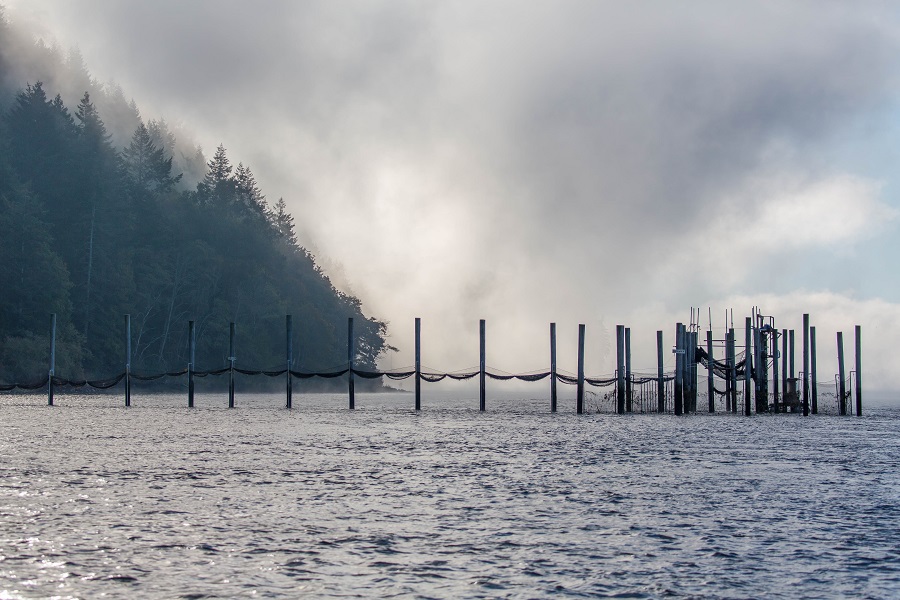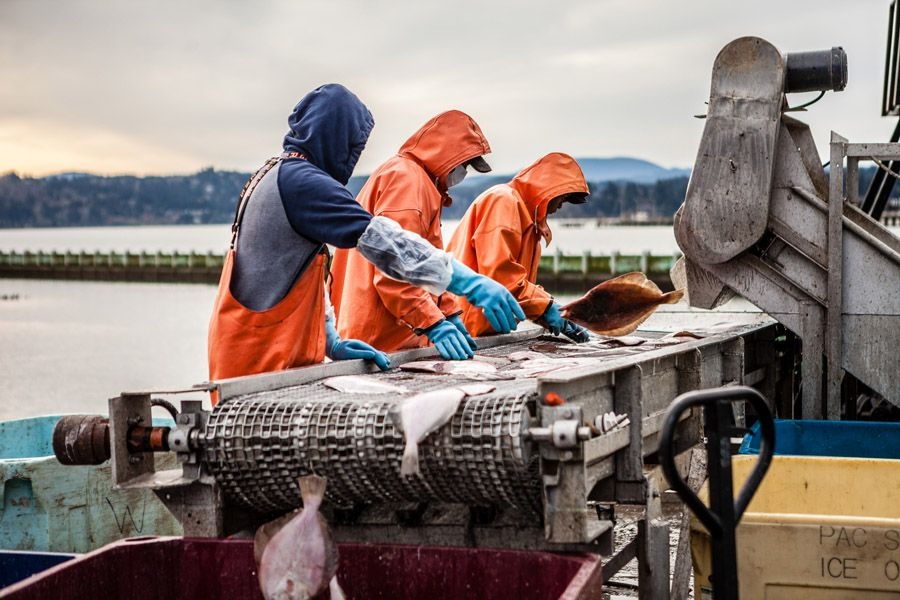Unsustainable fishing practices are part of the problem.
Part four of a series of stories on business solutions to climate change.
It was a surprise to many: A trade association representing crabbers in Oregon and California last year sued several big oil companies for contributing to climate change that has damaged their livelihoods.
The Pacific Coast Federation of Fishermen’s Association’s lawsuit, filed in the San Francisco County Superior Court in November 2018, alleges fossil fuel producers, including Chevron, Exxon Mobil and BP America, have knowingly contributed to climate change for decades, which has caused rising ocean temperatures, marine heatwaves and harmful algal blooms.
It was a bold move by the crabbers represented by the trade group, whose revenues dwarf those of Big Oil. It also illustrates how fisheries are at the forefront of climate change impacts. Their livelihoods are being eroded by warming ocean conditions caused by climate change. In the case of the crabbers, poor ocean conditions have led to prolonged closures over the past three years of Dungeness crab fisheries, the most valuable fishery on the West Coast.
But are commercial fishing businesses doing enough to combat the effects of climate change? Experts see problems with certain fishing practices that contribute to declining fish stocks and global warming. Some are calling for changes in these practices, as well as more savvy business management by fishermen to make them more resilient to the changing climate.
Among fish types that are most vulnerable to climate change is salmon. The species is in decline for of a number of reasons, including overfishing, the use hatcheries and loss of habitat. Their decline is compounded by climate change impacts, namely warmer ocean and river temperatures, which decrease the fish’s survival rates.
To make salmon more resilient to climate change impacts Adrian Tuohy, biologist and project manager at the Wild Fish Conservancy, is calling for a change in the way the fish are harvested on the Columbia River.
Salmon are caught in river using the common practice of gillnetting. Gillnets are composed of vertical panels of netting that hang from a line on the surface of the water. Fish are caught by the gills, which inflicts a high mortality rate. Only 52% of fish caught by the technique survive at best after they are released. Because of the low survival rate, fishermen are allowed to harvest the wild salmon, an endangered species, that are caught in the nets, along with farmed salmon reared in the hatcheries along the Columbia River.
Related story: Salmon decline reveals worrisome trend
Tuohy’s organization is piloting a more sustainable method of capture, called fish traps, which was used by canneries on the Columbia River in the early 1900s. Fish traps passively corral fish through a series of chambers. Fishermen can then sort the hatchery-raised salmon, identified by their clipped fins, from the wild salmon, which they can then release.
The nonprofit set up the experimental fish trap near Cathlamet in Washington in 2016. In 2017, 99% of Chinook wild salmon caught in the fish trap survived after being released, and 94% of steelhead survived.
 Research fish trap near Cathlamet in Washington Photo credit: Aaron Jorgenson
Research fish trap near Cathlamet in Washington Photo credit: Aaron Jorgenson
Tuohy says it is important to prevent hatchery-raised salmon from getting in the river and ocean because they spawn with wild salmon, making it hard for the wild species to reproduce and survive. The farm-raised fish also compete with their wild counterparts for food and habitat.
“By addressing harvest and hatcheries, we can protect the genetic diversity of wild salmon and steelhead populations which is the salmon’s only chance for adaptation and survival in the face of global climate change,” says Tuohy.
Although fish traps are effective at increasing the survival rate of wild salmon, their use is banned on the Columbia River. “Right now, sustainable fishing is illegal,” says Tuohy.
“We need to find tools to selectively get hatchery fish out of the river and release wild fish. Currently there is no tool to do that,” he says.
Related story: Gillnetters, sports fishermen, weigh in on ODFW’s surprise fisheries decision
Regulators want to see more research into the fish trap before lifting the ban on their use on the Columbia River. Tuohy says fishermen should receive government assistance to transition to using fish traps if the practice becomes legal. The industry’s heavy investment in gill nets and boats means that some fishermen may be reluctant to transition to the alternative method of capture.
“Fishermen need certainty to invest and also deserve government assistance. It is a huge expense to switch to another gear,” says Tuohy.
Related story: Fisheries by the numbers: Revenues, harvest size, employment
Experts also recommend that fishermen diversify the species of fish they catch. Fishermen that only catch salmon will not be able to survive as a business, says Tyson Rasor, food and fish program manager at Ecotrust.
“Some fishermen are scraping by in one or two fisheries,” says Rasor. “It really comes down to creating business support and management systems to keep a diversified fishing fleet available.”
Others point to the need for fishermen to switch to catching more plentiful stocks of species, such as rockfish and petrale sole. Their uptake depends on changes in consumer tastes. But a more diversified selection of fish available at the supermarket will become more of a necessity in future.
“Changing ocean conditions will change the composition of fisheries,” says Lori Steele, executive director of the West Coast Seafood Processors Association. “There will be some fish species that are more resilient and some that are not.”
Other proposed business solutions include increasing the numbers of fish that are frozen before they get to market. Fresh fish must be transported quickly to the consumer, which means transportation emissions are a large part of the fishing sector’s carbon footprint. If more fish were frozen and marketed effectively to the consumer, carbon emissions could be slashed, says Rasor.
These solutions may be of little comfort to Oregon and Californian crabbers who are worried that poor ocean conditions will wipe out their way of life. A bright spot is that Dungeness crab harvests appear to be improving after several years of declines. In 2017, 90,571 pounds of Dungeness bay crab was caught off the coast of Oregon, a more than tenfold increase from 2013 landings, according to Oregon Department of Fish and Wildlife data.
Nevertheless, the crab fisheries remain under threat. The Department of Fish and Wildlife and the Oregon Department of Agriculture closed large areas of the Oregon coast to commercial crabbing between 2015 and 2018 because of domoic acid toxicity in the crab meat, which can be harmful to humans.
The uncertainties caused by climate change will only remain. But businesses can still do more to mitigate it.
Other stories in the climate change series:
Oregon’s infrastructure hasn’t been upgraded for 100 years. Some think it is time to fix that.
Design with nature: working wetlands, water quality trading and Willamette restoration
Promising solutions rise to top of wildfire discussion
To subscribe to Oregon Business, click here.




